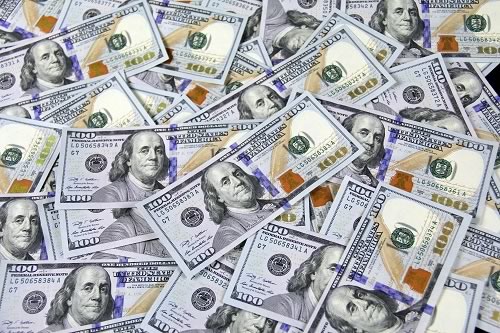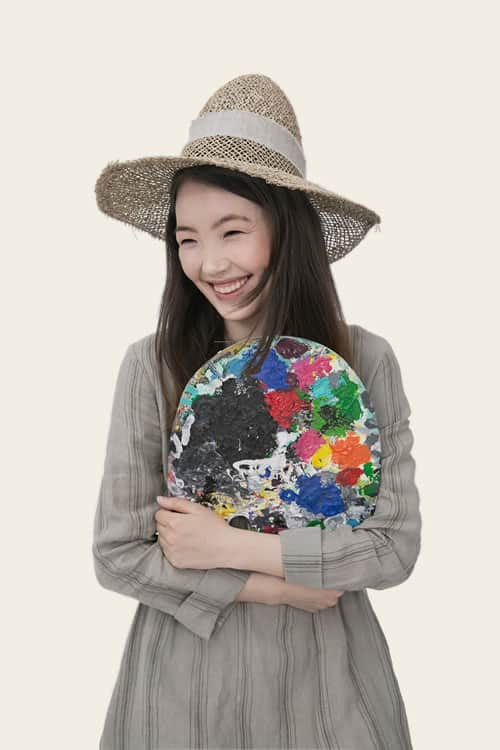If you purchase an artist before they become “collectible,” it can be an amazing investment. If you invest in an individual work by an artist who is already collectible, you’re also likely to have nice investment returns. We’ll explore whether or not collecting art is a good investment.
We’ll look at historical art investment returns, some of the big wins, and discuss how art may be an especially good investment in the current economic climate.
Like any investment, you’ll want to do your homework before you start investing and our art collectors guide is a great place to start. You’ll need to be prepared to track the work and its value, so you can understand your profit and file your taxes correctly.
How Do Art Investments Work?
Investments are supposed to generate money for the investor over a period of time. Your investment is the principal and then you may have cash flow in the form of rent income or business profit. Hopefully, when you sell, the price the new owner pays is more than you paid. The difference between what you paid and what the new owner is called return on principal and is subject to capital gains tax.

There are a few exceptions where art can be rented, but for most collectors, “buy low, sell high” is the primary investment approach. The nice thing about making money through capital gains unlike salary or rental income is that it’s only taxed when you sell.
Example: You buy a work of art today and it’s steadily appreciating for five years until you sell it for double what you paid. You only pay taxes in year 6 on the difference between what you paid and what you sold it for. The tax rate is generally significantly less than the tax rate on other types of income.
So to invest in fine art, you have to either buy the art directly or you may invest in a fund that invests in art for you, somewhat similar to a REIT that holds and manages real estate. You can track this type of investment more like you would the purchase of a stock or mutual fund.
On the other hand, if you’re looking to have a lot more fun, then you may get the chance to invest in art that you love. If a growing pool of other people loves it, too, then you may have a great investment.
What to Know Before Investing in Art
Like any investment, you’ll want to have a system in place to manage your collection and track your financial success and be sure you are in compliance with all applicable tax laws, An art collection management software can help with this.
Unlike real estate or stocks, finding investible art can be challenging. Whereas you can buy stocks online or you use apps to see what real estate is available in the neighborhood of your choosing, the art market is more opaque. You’ll need to develop a network to help you find the right investments and then sell them when you’re ready.
With art, you’ll also need to take the physical nature of the investment into account. Art takes up space, is fragile, and in many cases, is something you’ll want to display. You’ll need a safe place to store your art. The walls of your home or office are great possibilities if you can find specific locations that don’t put the art at risk of damage by children, humidity, sunlight, etc. You’ll also want to be sure you get familiar with how to properly handle and transport art.
Similar to investments in real estate, you’ll have significant equity in a single location that’s at risk of fire, earthquakes, hurricanes, and other natural disasters. You’ll want to be sure that you have a good insurance policy and add coverage for each piece as you acquire it. Having a good art cataloging app like ETChster makes tracking pieces and providing a spreadsheet to an insurer simpler. Keep in mind that as your collection appreciates, you’ll want to revise the insured value of each piece appropriately.
What to Look for When Buying Art
In terms of the speculative side of buying art, you’ll have the biggest gains or highest return on investment if you start buying the work of an artist way before the broader art world takes notice. Alternatively, you’ll have a higher likelihood of appreciation when you buy a work by an artist that is already collectible.
*You’ll also find news about buying an “NFT art collection” as an investment. NFTs are not actually art, however.
Let’s look at a couple of 5-year scenarios with the same absolute returns:
A. You purchase a piece of art for $10,000US by an artist you think is amazing but that no one has heard of. The artist has gained some attention and you’re able to sell it for $50,000 after 5 years. Your absolute return is $40,000. Your ROI is 400% and your annualized return is 37.97%.
B. You purchase a piece of art for $50,000US by an artist that already has a following and sell it for $90,000 after five years. Your absolute return is $40,000. Your ROI is 80%. Your annualized ROI is 12.47%.
If you went with option A, you had much better returns and could have used that extra $40,000 to invest in other pieces or other types of investments, BUT your risk of making no money or even losing money was much higher. The option-A artist has no traction as an art business. You’re speculating that the stars will align for them to stick with it and get the attention they need over time.
Option B was less risky and required more initial investment to get the same absolute return, but your chances of losing everything were diminished because the artist was already getting traction.

These types of trade-offs are common in all types of investments.
So Is Art Collecting a Good Investment?
Mitt Romney would tell you that collecting fine art is a great investment, especially given the current high-inflation environment and risk that new types of taxes may be devised for wealthy United States citizens.
Whether you’re subject to US taxes or not, the price of works of art by bluechip artists has been going up and has provided a better return than the S&P 500 if you track the Artprice 100. By bluechip, they mean artists such as Pablo Picasso, Claude Monet, or Georgia O’Keefe.
Thinking about our example above, you have to have substantial capital to purchase a work by one of these artists individually but the likelihood of appreciation was higher and risk is reduced when buying blue-chip artists.
On the other hand, Artprice.com illustrates the potential gains when buying an artist before the broader art world takes notice in their risk-reward comparison:
The buyer who dared to acquire Christopher Wool’s Untitled (1990) in 2000 for $35,250, completed an extraordinary operation by reselling it fifteen years later for $2,405,000. Nevertheless, that investment involved significant financial risks linked to a high level of uncertainty. The value accretion of works by Christopher Wool essentially began after the financial crisis of 2008, as revealed by the price index calculated by Artprice for original works by this artist. In fact, a collector who bought a canvas (or a drawing) by Christopher Wool just after he joined the Gagosian and Simon Lee galleries in 2006, would have benefited almost as much from Wool’s success, but without taking the same risks as the buyer who bought in 2000.
https://www.artprice.com/artmarketinsight/the-artprice100-index-up-36-in-2021
Conclusion
So is collecting art a good investment for you?
Will you take more of a venture capitalist approach and buy artists who you think are great before others do in hopes that one of them will be a breakout star?
Or will you invest in blue-chip artists that everyone knows and hope you beat the returns of the stock market? You can also invest in a fund that buys art from multiple artists and allows you to invest an amount that fits with your budget.
There are many ways to invest in art and make it a good investment if you do your homework.



Thanks for the clarification.It is very helpful, but still more guidelines is needed.
Thanks for the clarification.It is very helpful, but still more guidelines is needed.